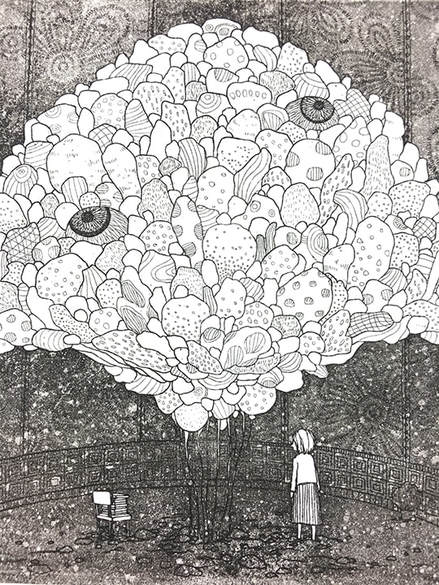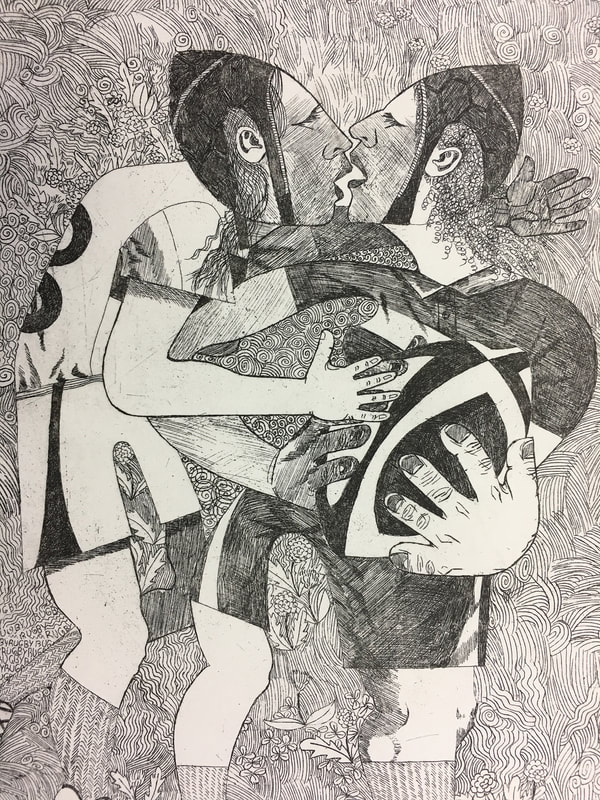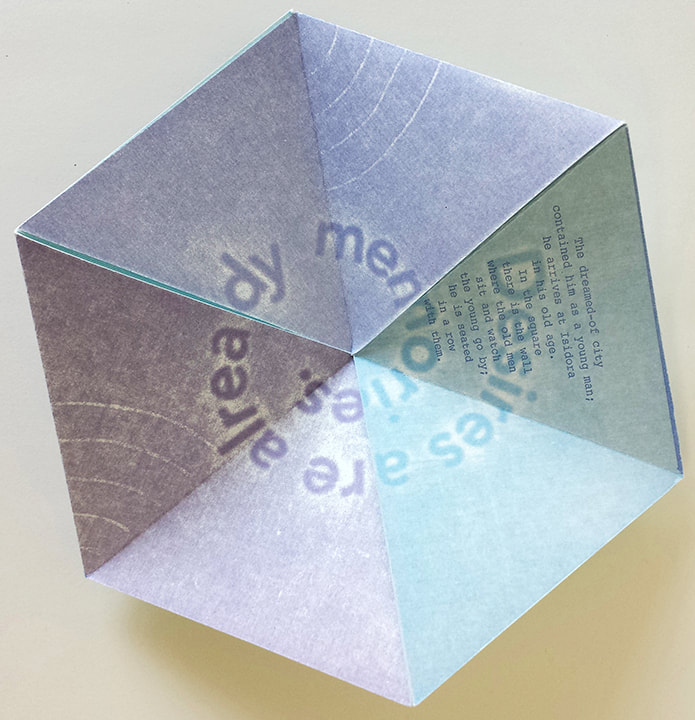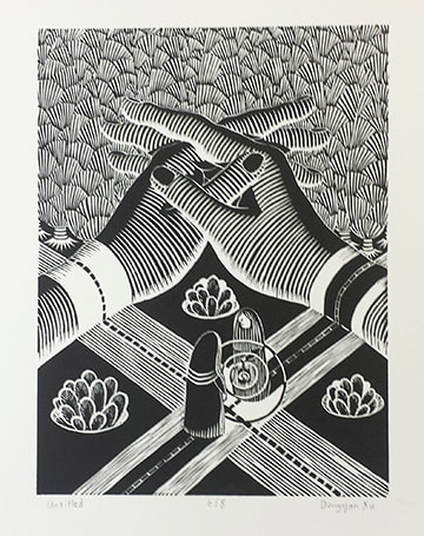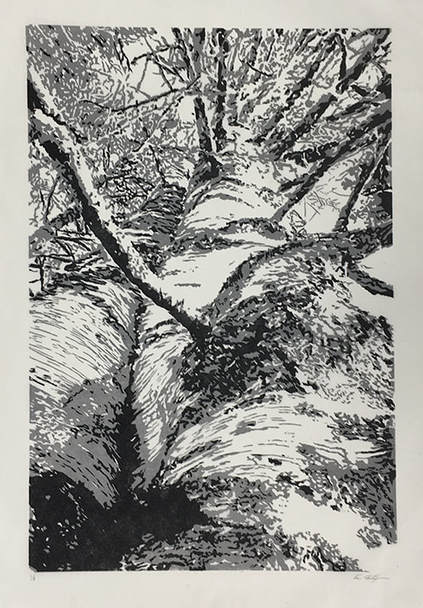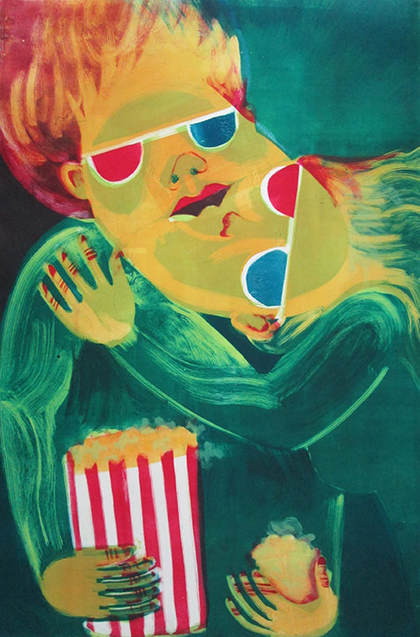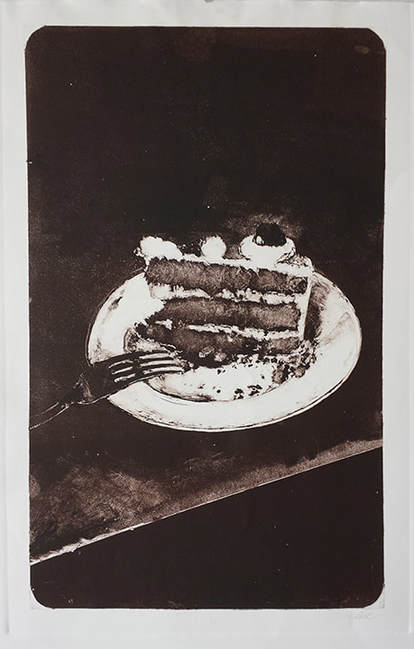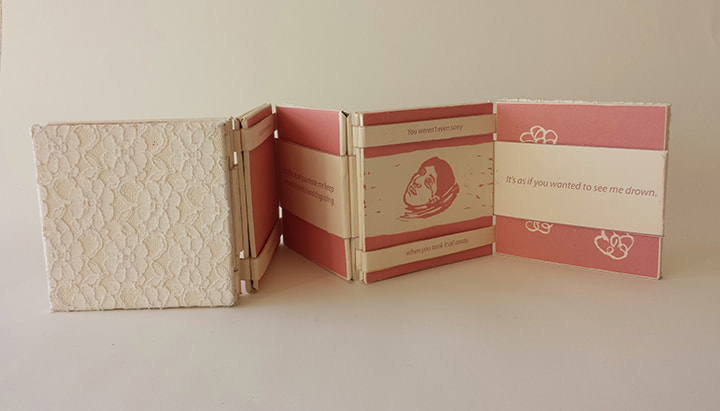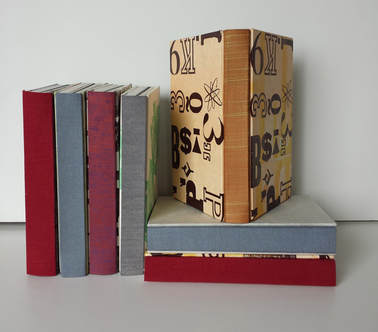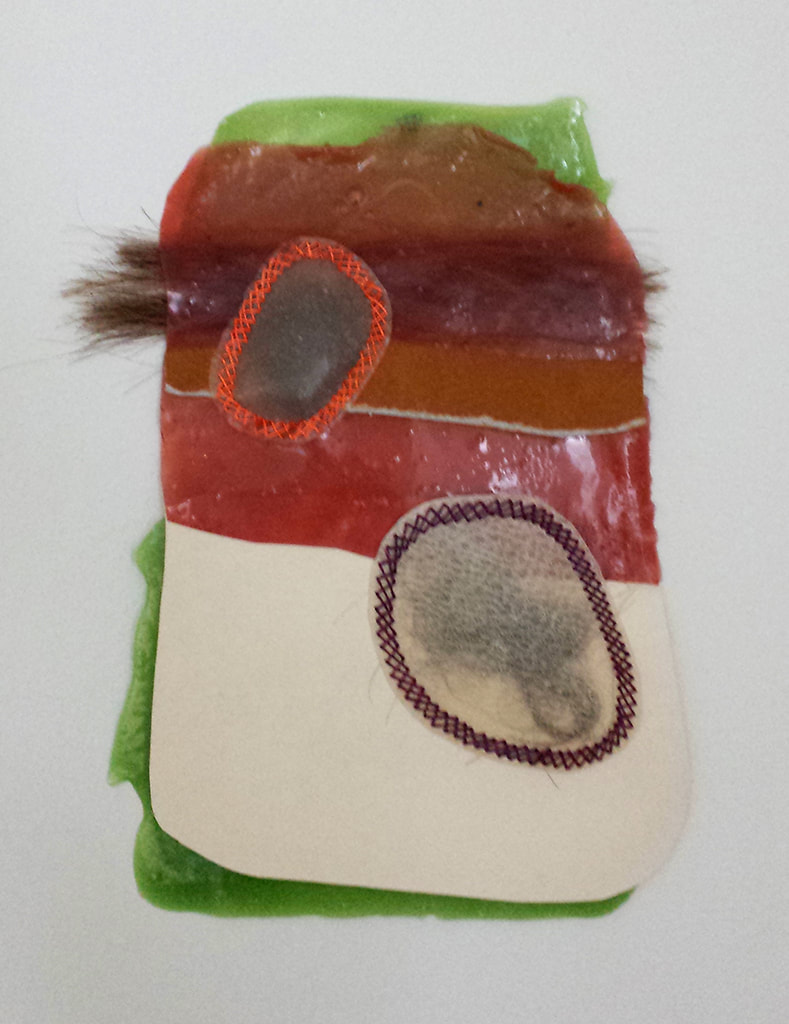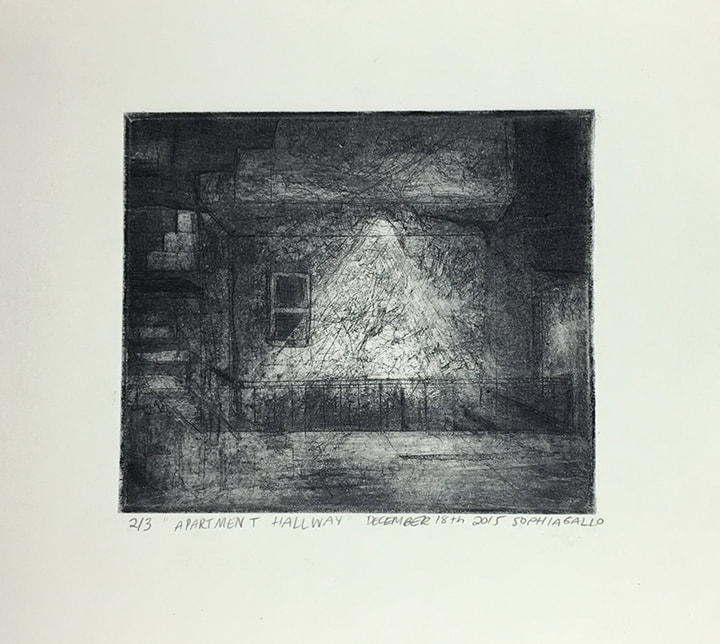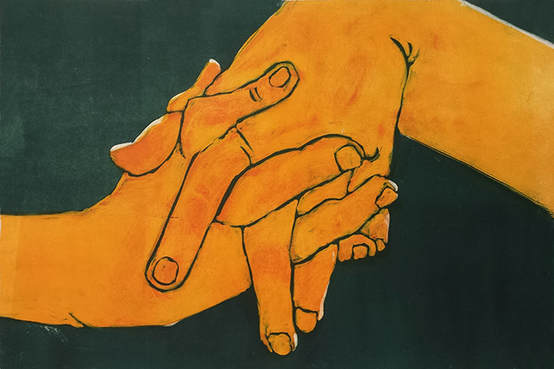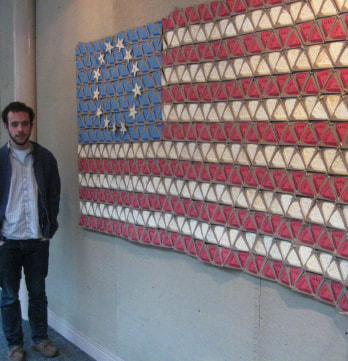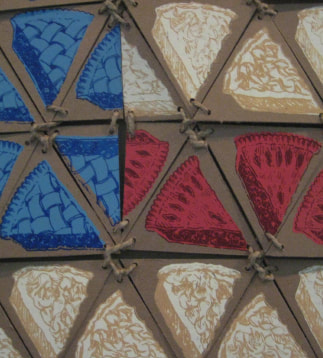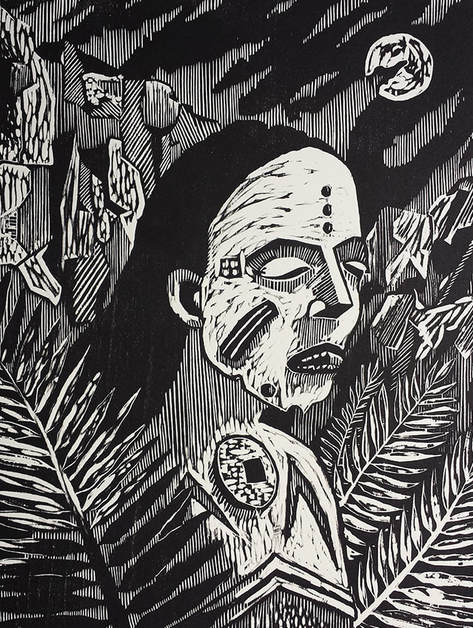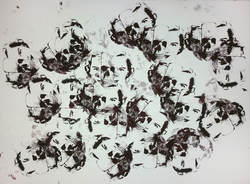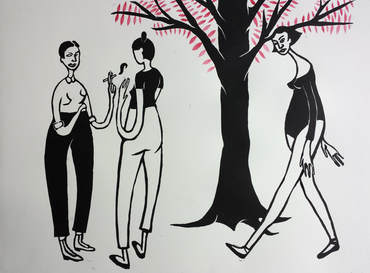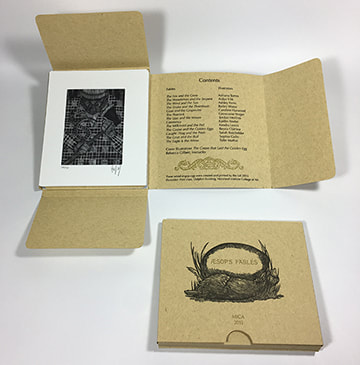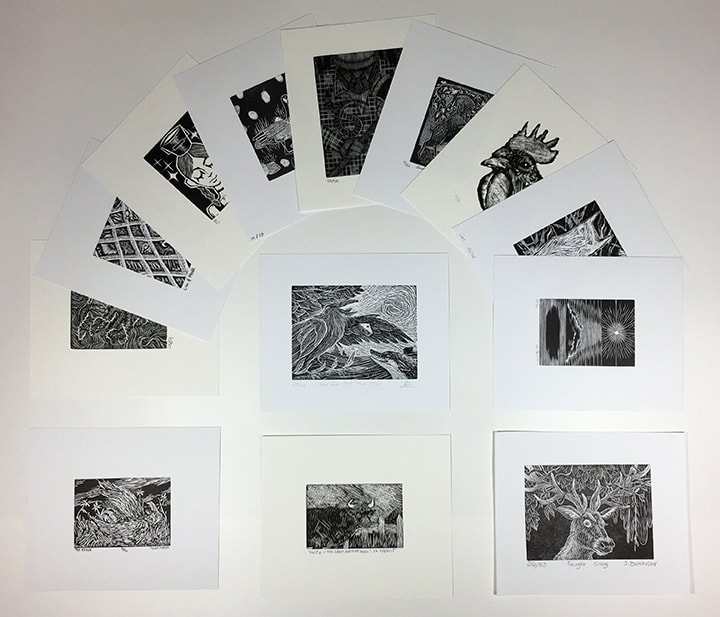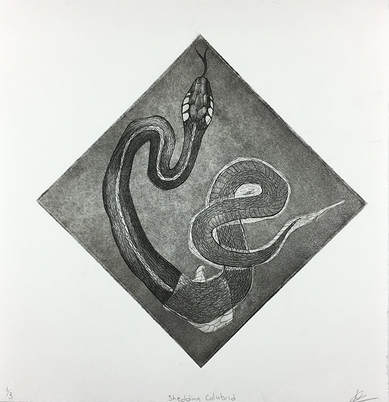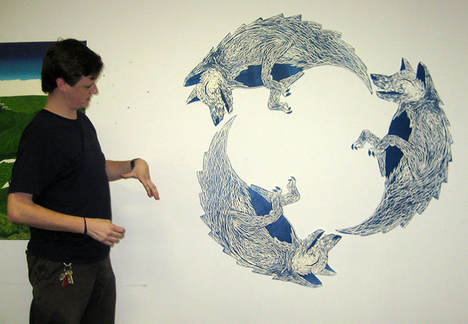|
Introduction to Printmaking: Traditional Processes, Maryland Institute College of Art
Etching with aquatint, 2015 Liora Ostroff, Junior |
Structure and Metaphor, The University of the Arts
Haptic Book Project, Pressure Print with Letterpress (hand set type), hexaflexagon binding, 2015 Min Kyong Kim, Senior |
|
Illustrative Print, Maryland Institute College of Art
Trade Portfolio, Letterpress and wood engraving, 2015 Each student illustrated the Aesop fable of their choice and editioned a wood engraving for the portfolio exchange. The enclosures were printed using a combination of moveable type, polymer plate, and wood engraving. They were assembled in class. |
Illustrative Print, Maryland Institute College of Art
Trade Portfolio, Letterpress and wood engraving, 2015 Each student illustrated the Aesop fable of their choice and editioned a wood engraving for the portfolio exchange. The enclosures were printed using a combination of moveable type, polymer plate, and wood engraving. They were assembled in class. |
Teaching Philosophy
|
|
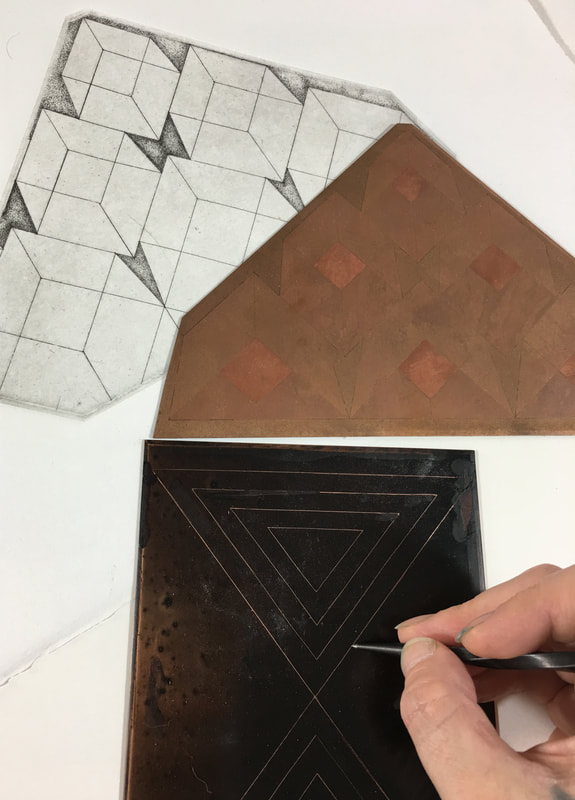
As an instructor, my role is to provide all students with a strong foundation of knowledge that will enable them to use the tools, processes, materials, and technology available to them in order to translate their ideas into visual art. Within that scheme, I develop projects that challenge students to work within parameters that facilitate student understanding, growth, and critical thinking. I encourage students to consider how they can incorporate new technologies into their work and work across disciplines to integrate other media.
While emphasizing the importance of formal design principles, craftsmanship, technical ability, content development, and expression, I teach students disciplined and safe studio practices and familiarize them with the vocabulary necessary to discuss their process and studio practice. I embolden students to pursue research beyond the classroom, challenge themselves, take risks, and make work that they’re excited about while they explore the edge of their comfort zones.
It’s vital to me to create an open and inclusive environment in my studio classroom – one where everyone feels free to express himself, herself, or themselves by asking questions, participating in class discussions and critiques, and by articulating their ideas freely through their artwork. I know that printmaking isn’t going to speak to everyone on the same level, but it’s my hope that my enthusiasm for the medium shines through to my students and that it motivates and inspires them as it cultivates a lasting respect for process-based art as well as the materials and equipment associated with it.
How I Implement These Ideas / Class Structure / Presenting Information
When organizing the schedule for my studio classes, I balance presenting lectures, demonstrations, and critiques, while still allowing adequate time in the studio for students to develop their projects with my technical assistance. I incorporate art history into my technical discussion and demonstrations because I believe that understanding the history of technique and its evolution helps students to contextualize their own work within the landscape of contemporary art. These discussions and demonstrations are often supplemented with examples of student work and handouts. I follow up with personal attention to students through one-on-one discussions, assistance, and guidance. When appropriate, I complement the content of my classes with slide presentations, readings, and field trips so students can see a wide variety of working methods. Class projects are organized so they are presented from technically simple to advanced, with each building on students’ knowledge and skills as the course progresses. I conceive every project with particular learning goals in mind so students know what is expected of them.
Evaluating Student Work
Individual projects are evaluated aesthetically as well as conceptually based on comprehensive grading rubrics that assign points for individual categories such as attention to formal concerns, the craftsmanship exhibited in the work, technical proficiency, translation and expression of an idea into visual art, and evidence of idea development.
Student attendance, class participation, quizzes grades, response essays, ability to follow instructions, and completion of preliminary sketches and/or project proposals also affects students’ grades.
While emphasizing the importance of formal design principles, craftsmanship, technical ability, content development, and expression, I teach students disciplined and safe studio practices and familiarize them with the vocabulary necessary to discuss their process and studio practice. I embolden students to pursue research beyond the classroom, challenge themselves, take risks, and make work that they’re excited about while they explore the edge of their comfort zones.
It’s vital to me to create an open and inclusive environment in my studio classroom – one where everyone feels free to express himself, herself, or themselves by asking questions, participating in class discussions and critiques, and by articulating their ideas freely through their artwork. I know that printmaking isn’t going to speak to everyone on the same level, but it’s my hope that my enthusiasm for the medium shines through to my students and that it motivates and inspires them as it cultivates a lasting respect for process-based art as well as the materials and equipment associated with it.
How I Implement These Ideas / Class Structure / Presenting Information
When organizing the schedule for my studio classes, I balance presenting lectures, demonstrations, and critiques, while still allowing adequate time in the studio for students to develop their projects with my technical assistance. I incorporate art history into my technical discussion and demonstrations because I believe that understanding the history of technique and its evolution helps students to contextualize their own work within the landscape of contemporary art. These discussions and demonstrations are often supplemented with examples of student work and handouts. I follow up with personal attention to students through one-on-one discussions, assistance, and guidance. When appropriate, I complement the content of my classes with slide presentations, readings, and field trips so students can see a wide variety of working methods. Class projects are organized so they are presented from technically simple to advanced, with each building on students’ knowledge and skills as the course progresses. I conceive every project with particular learning goals in mind so students know what is expected of them.
Evaluating Student Work
Individual projects are evaluated aesthetically as well as conceptually based on comprehensive grading rubrics that assign points for individual categories such as attention to formal concerns, the craftsmanship exhibited in the work, technical proficiency, translation and expression of an idea into visual art, and evidence of idea development.
Student attendance, class participation, quizzes grades, response essays, ability to follow instructions, and completion of preliminary sketches and/or project proposals also affects students’ grades.

